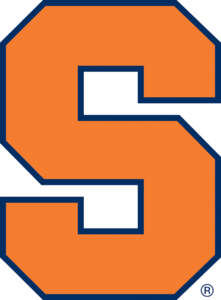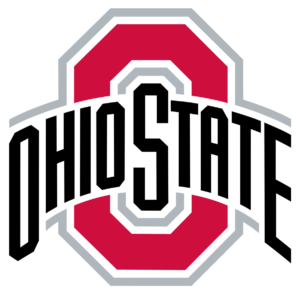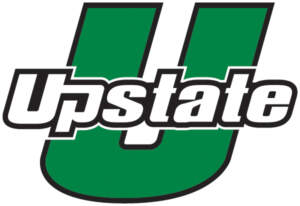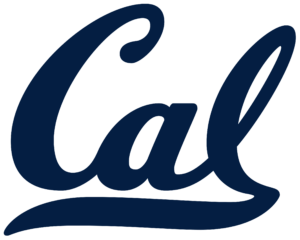By Sam Blackman
With the season opener for Clemson and Auburn fast approaching, it’s important to note the significant relationship that existed between the two schools in the early beginnings of Clemson football.
The first three head coaches of the Clemson football program were all Auburn graduates. W.M. Williams, John Penton and the father of Clemson Athletics, Walter Merritt Riggs.
On a still, balmy, September night in 1896, on the young and undeveloped Clemson College campus, a group of cadets met in the barracks to discuss the feasibility of organizing a football team to represent the all-male military school. Other state schools had football, and the question was raised–why not Clemson?
From this group three students were appointed to consult an engineering professor, Walter M. Riggs as to the management of a football team and to ask his aid as coach.
It was only appropriate Riggs would coach the Clemson Tigers. Riggs originally came to Clemson from Auburn. He graduated with top honors in 1892 with a B.S. degree in electrical and mechanical engineering. At Auburn, he was captain and catcher of the baseball team as well as the manager and left end of the football team. He also served as class president and was the director of the Glee Club.
The interest in Clemson football dates to the founding of the program. Clemson University was founded in 1889. Just seven years later the school had a football team. Only Miami (FL) and NC State started programs sooner after the founding of the school.
Upon his graduation at Auburn, he was an assistant to the president of the college until 1896, and then he made his trek to Clemson. Before he left his alma mater, he hired John Heisman to be the head football coach for the Auburn Tigers.
(Below is the 1895 Auburn Football Team. Riggs is pictured on the back row standing on the far left. Heisman is is the fifth person on the back row with the striped shirt and wearing glasses.)
Walter Riggs could easily be called the father of Clemson Athletics.
He coached the football program at Clemson, not only because he had football experience, but he was also one of only two people on the Clemson campus to have ever seen a football game when the sport started in 1896. (The other person was Frank Thompkins who played in the backfield on Clemson’s first team in 1896).
Walter Riggs Comes to Clemson
In an article written by Walter Riggs he describes his arrival at Clemson in the late 1800s.
“In 1896, Clemson College was quite a different looking place to what it is now. The campus was more or less covered with underbrush. There were no well-defined paths and very poor roads. There was only one barracks and only three other principle buildings, the Main Building, the Chemical Laboratory, and the Mechanical Hall. The Agricultural Laboratories and classrooms were in the main building. The post office was a little one-room wooden house to the right of the road as you pass the Mechanical Hall, and about halfway between the road and the Calhoun Mansion. On the grass field in front of this little post office, football had its beginnings.
“When leaving Auburn, I had ‘sworn off’ from athletics. But when the fall of 1896 came around and the Clemson boys wanted to get up a football team, the ‘call of the wild’ was too strong, and again I found myself in a football suit, and the single-handed coach of the first Clemson football team.
“There was only one man in college who had ever seen a football and that was Frank Tompkins. The players had to be taught everything. They had never seen a gridiron or a football game, and had no idea what to do or how to stand.
“The first game was with Furman University in Greenville, and it was the first time the Clemson eleven lined up on a full-sized gridiron. Furman, who had been playing since 1889, was confident of victory—Clemson won the game 14 to 6.”
“In looking back over a service of several years, I regard the introduction of intercollegiate football into Clemson College as one of the most valuable steps in the development of the institution. Long before its graduates could spread its fame as an institution of learning, its football teams had made the name of Clemson College known and respected throughout the nation.”
“In a well-rounded college life, play is just as indispensable to healthy growth as is work. Athletics should not interfere with studies, nor should studies exclude athletics, each should have a proper and legitimate place in the thought and life of the students.”
Riggs stepped down as football coach after the first season because the players wanted him to devote all of his time to being a professor in the engineering department.
Clemson athletics and Riggs, however, could not be split. Although not given the title, Riggs also was the equivalent of an athletic director, managing money and making contracts with other teams as he served as President of the Athletic Association.
Riggs could easily be called a loyal man, as he answered the need of the Clemson football team again in 1899. The Clemson Athletic Association was low on money and could not afford to hire a coach. So Riggs once again answered the call of the school and became the coach of the 1899 team for free. That season, he coached his younger brother, Arthur, who played in the backfield for the Tigers.
Riggs the Administrator
Riggs later became President of Clemson on March 7, 1911 and on October 2, 1915, a new football stadium with other athletic facilities was named in his honor as Riggs Field. It is currently the home of the Tiger soccer teams. In two years of coaching, Riggs guided the Tigers to a career record of 6-3. Over 100 years later the field named after him is still serving Clemson and is a significant facility in the Tigers’ athletic program.
After starting the Clemson program and coaching the team in 1896 and 1899 he headed the Clemson Athletic Association (Athletic Director) and was a key administrator of the Southern Intercollegiate Athletic Association (an early southern athletic conference with several schools as members).
In 1900, the search for a new coach ended when, Riggs hired Heisman again, this time to coach the Clemson Tigers.
(Below the 1900 Clemson Football Team. Riggs is pictured on the left at the very top. Heisman is the located on the far right on the second row wearing a tie above the player with the C on his jersey.)
The well-respected Riggs was also president of the Southern Intercollegiate Athletic Association (SIAA), an early conference preceding the Southern Conference. In later years, he became interim president of Clemson in 1909 and became the school’s fifth president on March 7, 1911
Riggs was from Orangeburg, S.C. He had a keen interest in South Carolina State, and ironically the school was in his hometown.
During the development of S.C. State, Riggs helped design the infrastructure of the Orangeburg, S.C. school in his spare time and free of charge. This included electrical plans as well as utilities such as water, heat, and sewage as the school developed. He was also an advisor and friend to the school. Riggs also helped S.C. State develop an extension service that mirrored Clemson’s department to help African-American farmers.
In Washington D.C. on Tuesday, January 22, 1924, Riggs died unexpectedly. He was in the nation’s capital to attend a meeting of the executive committee of the American Association of Land Grant colleges. Riggs kept a demanding schedule and was known as a tireless worker.
At his hotel room in Washington, he had a coughing spell that was believed to have resulted in an internal rupture. At the time, the attack was not believed to be serious and a doctor was called to his side. A few hours later he died.
He had been suffering from high blood pressure and friends and colleagues warned that he should rest more and not work so hard. He was only 50 years old when he died and was just two days shy of his 51st birthday. Some historians believe that he worked himself to an early death.
In all, Riggs had a 28-year association with Clemson. He served as Clemson’s coach, president, and friend to many.
 Syracuse
Syracuse 
 Virginia
Virginia  Florida State
Florida State  Wake Forest
Wake Forest  Miami (Fla.)
Miami (Fla.)  Alabama
Alabama  Tennessee
Tennessee  Charlotte
Charlotte  USC Upstate
USC Upstate  Ohio State
Ohio State  Georgia State`
Georgia State`  Ohio University
Ohio University  Virginia Tech
Virginia Tech  Indiana
Indiana  Tiger Classic
Tiger Classic  South Carolina
South Carolina  South Carolina
South Carolina  Campbell
Campbell  UAB
UAB  East Tennessee State
East Tennessee State  LSU
LSU  South Carolina
South Carolina  App State
App State  North Carolina A&T
North Carolina A&T  Charlotte
Charlotte  Pittsburgh
Pittsburgh  Troy
Troy  Georgia
Georgia  Cougar Classic
Cougar Classic  Georgia
Georgia  VCU
VCU  Stanford
Stanford  Elon
Elon  USC Upstate
USC Upstate  Georgia Tech
Georgia Tech  Wofford
Wofford  SMU
SMU  California
California  Queens
Queens  Georgetown
Georgetown  Norfolk State
Norfolk State  Louisville
Louisville  Charleston Southern
Charleston Southern  Mason Rudolph Championship
Mason Rudolph Championship 





